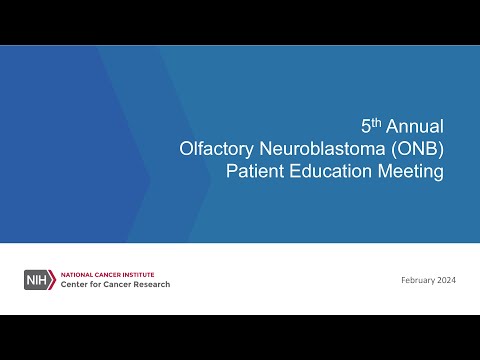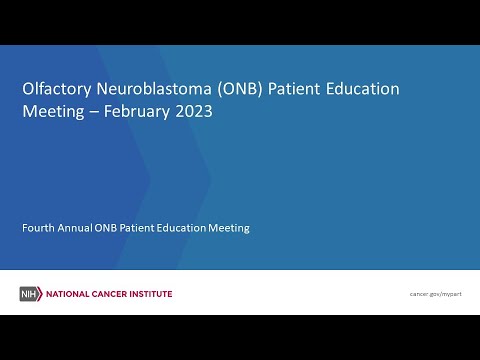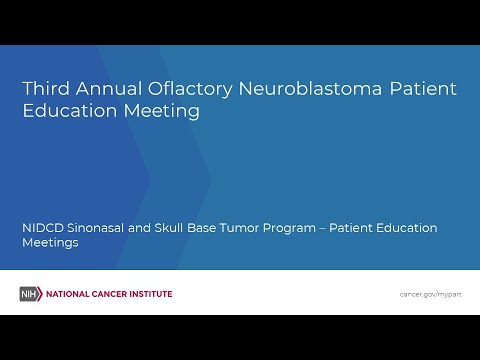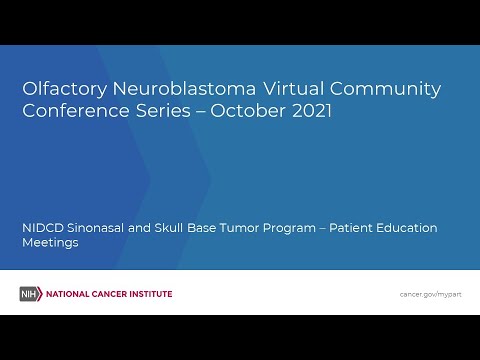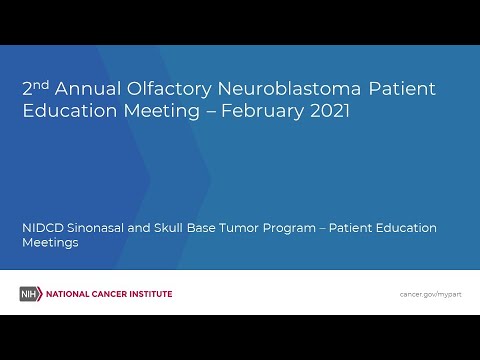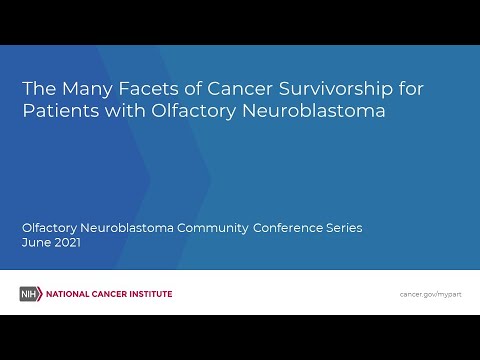What is olfactory neuroblastoma?
Olfactory neuroblastoma, or esthesioneuroblastoma, is a tumor that grows in the nasal cavity. The nasal cavity has nerves and other tissue that are responsible for the sense of smell. This kind of tumor begins in the nasal cavity and can grow into the nearby eyes and brain. Olfactory neuroblastoma can also spread to other parts of the body, such as the neck, lungs, and bones.
How common is olfactory neuroblastoma?
Olfactory neuroblastoma is a rare type of cancer, making up only 3% of nasal cavity tumor cases. Olfactory neuroblastoma affects only about 1 person per 2.5 million each year. Olfactory neuroblastoma can form at any age but is most commonly seen in people ages 50 to 70 years old.
How is olfactory neuroblastoma diagnosed?
Olfactory neuroblastoma can cause several symptoms as the tumor grows, including:
- Nose bleeds
- Loss of the sense of smell
- Difficulty breathing through the nose
- Pain
Imaging: If you have symptoms of olfactory neuroblastoma, your doctor will use imaging scans such as X-ray, CT, and MRI to look at where the tumor is and how big it is. They will also check for signs that the tumor has spread to other parts of the body.
Biopsy: To check if the tumor is olfactory neuroblastoma your doctor will do a biopsy, taking a small sample from the tumor. An expert, called a pathologist, will study cells from the sample under the microscope to see what kind of tumor it is.
How is olfactory neuroblastoma treated?
Treatment for each patient will be unique. You should go to an expert in olfactory neuroblastoma treatment to decide the best approach for your tumor.
Treatment options to discuss with your doctor include:
Surgery: Surgery is used to remove as much of the tumor as possible and some surrounding healthy tissue to improve the chances of removing all of the tumor cells.
Radiation therapy: Radiation therapy is a treatment option for some olfactory neuroblastoma tumors. Radiation therapy may be the main treatment, or it may be used after surgery to help reduce the chances that the tumor will grow back.
Chemotherapy: Chemotherapy may be used in combination with radiation after surgery to treat some olfactory neuroblastoma tumors or in cases where the tumor has spread to other parts of the body.
Does olfactory neuroblastoma run in families?
No, olfactory neuroblastoma is not thought to run in families.
How does olfactory neuroblastoma form?
Scientists are always working to understand how cancer forms, but it can be hard to prove. So far, we do not yet know what causes olfactory neuroblastoma to form, but scientists have found that changes in some parts of the DNA, called chromosome 2, chromosome 5, chromosome 6, chromosome 7, and chromosome 20, may be involved.
What is the prognosis for someone with olfactory neuroblastoma?
The estimate of how a disease will affect you long-term is called prognosis. Every person is different and prognosis will depend on many factors, such as:
- Where the tumor is in your body
- If the cancer has spread to other parts of your body
- How much of the tumor was taken out during surgery
If you want information on your prognosis, it is important to talk to your doctor. Also, NCI has resources to help you understand cancer prognosis.
Doctors estimate olfactory neuroblastoma survival rates by how groups of people with olfactory neuroblastoma have done in the past. The survival rate varies depending on the stage of disease but is thought to range from 50-90%.
Watch:
To learn more about olfactory neuroblastoma, watch the videos below of recorded Patient Education Meetings hosted by Dr. Nyall London from the National Institute on Deafness and Other Communication Disorders (NIDCD) Sinonasal and Skull Base Tumors Program, which feature experts on olfactory neuroblastoma.
